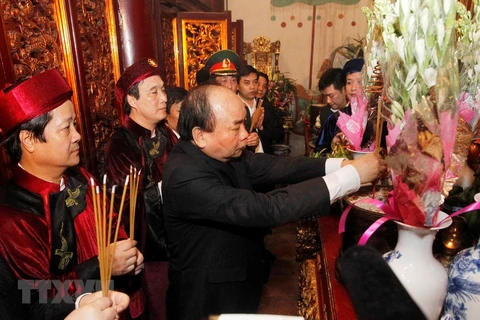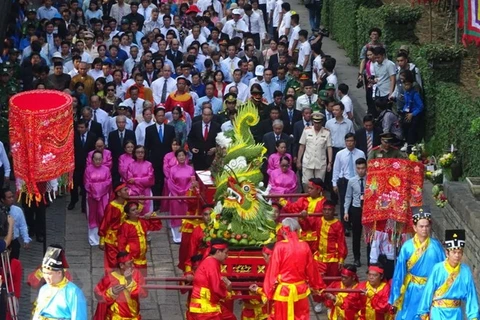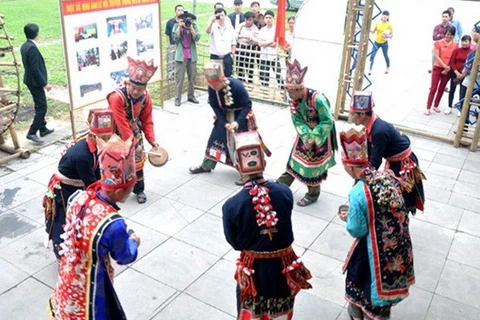Hanoi (VNA) - The northern province of Phu Tho will launch a short film in Vietnamese and English to introduce and popularise the Hung Kings Temple and traditional Vietnamese beliefs.
The 10-minute film entitled Den Hung - Linh Thieng Nguon Coi (Hung Kings Temple - The Sacred Homeland) was made by Phu Tho province, the Hung Kings Temple Relic Site and PetroVietnam Gas Corporation.
Traditional Vietnamese beliefs and practices are introduced in the film, giving viewers a chance to learn more about the glorious history of the nation.
The film will air on Voice of Vietnam Television, People’s Television and Vietnam Multimedia Corporation Television in the coming Lunar New Year. It will show the custom of worshipping Hung Kings on the occasion of the Ancestral Anniversary and Hung Kings Temple Festival, falling on the 10th day of the third lunar month.
Legend has it that Lac Long Quan (Dragon King) and his wife Au Co (Phoenix Queen) gave birth to one hundred men. Fifty sons went with their mother to live in the mountain and the father took the other sons out to sea. The eldest son followed the mother to settle in Phong Chau of today’s Phu Tho province and founded the country known as Van Lang.
Van Lang was the first state of Vietnamese people. The Hung Kings’ dynasty lasted 18 generations.
The custom of worshipping the Hung Kings developed from the 12th century, being officially honoured during the reign of King Le Thanh Tong in 1470. Since then, celebrations of the founders of the Vietnamese nation were maintained throughout the community. The practice was recognised as an Intangible Cultural Heritage of Humanity by UNESCO in 2012.-VNS/VNA
The 10-minute film entitled Den Hung - Linh Thieng Nguon Coi (Hung Kings Temple - The Sacred Homeland) was made by Phu Tho province, the Hung Kings Temple Relic Site and PetroVietnam Gas Corporation.
Traditional Vietnamese beliefs and practices are introduced in the film, giving viewers a chance to learn more about the glorious history of the nation.
The film will air on Voice of Vietnam Television, People’s Television and Vietnam Multimedia Corporation Television in the coming Lunar New Year. It will show the custom of worshipping Hung Kings on the occasion of the Ancestral Anniversary and Hung Kings Temple Festival, falling on the 10th day of the third lunar month.
Legend has it that Lac Long Quan (Dragon King) and his wife Au Co (Phoenix Queen) gave birth to one hundred men. Fifty sons went with their mother to live in the mountain and the father took the other sons out to sea. The eldest son followed the mother to settle in Phong Chau of today’s Phu Tho province and founded the country known as Van Lang.
Van Lang was the first state of Vietnamese people. The Hung Kings’ dynasty lasted 18 generations.
The custom of worshipping the Hung Kings developed from the 12th century, being officially honoured during the reign of King Le Thanh Tong in 1470. Since then, celebrations of the founders of the Vietnamese nation were maintained throughout the community. The practice was recognised as an Intangible Cultural Heritage of Humanity by UNESCO in 2012.-VNS/VNA
VNA

























